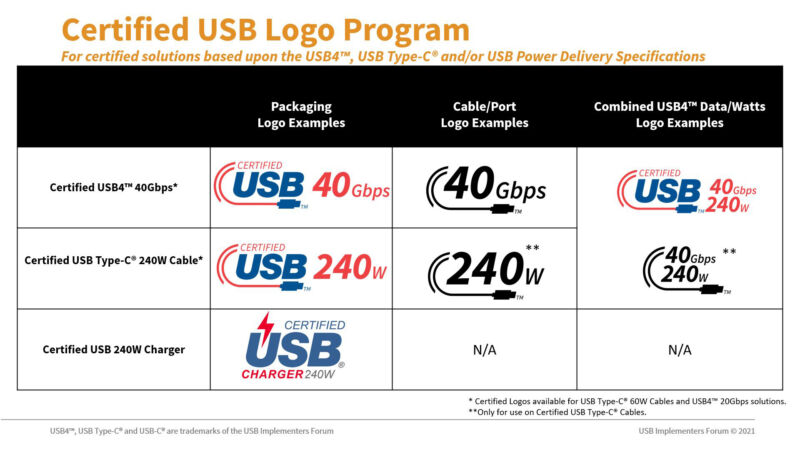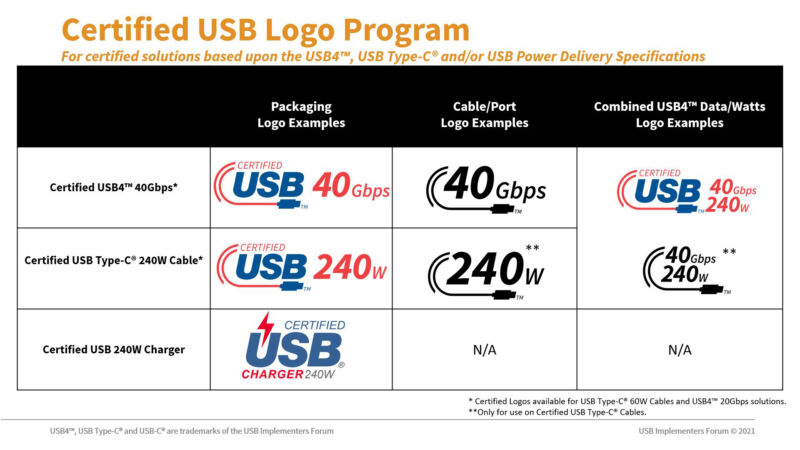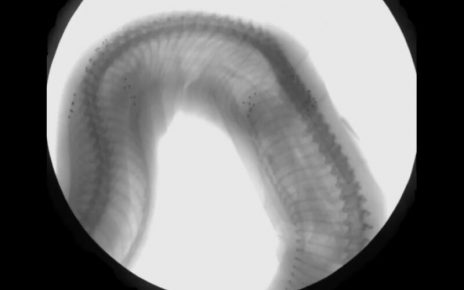
Enlarge / The USB-IF is planning new logos to go with the upgraded capabilities of USB-C 2.1 cables and chargers. (credit: USB-IF)
In just a few years, the USB-C port has gone from infancy to ubiquity. Aside from a couple of exceptions, it is the main charging, data, and display port for nearly all modern phones, tablets, and laptops. The European Union has even proposed making it mandatory in all devices.
The problem is that the USB-C connector has always been related to but separate from the other specifications in the USB protocol. USB-C cables can use 2.0 or 3.2 speeds, they can support multiple charging wattages, they can either have or not have Thunderbolt support, and even Thunderbolt cables can be either “active” or “passive.” The connector is the same, but the capabilities aren’t.
The group behind USB-IF has always taken a hands-off approach to this problem, choosing to solve it not with top-down mandates but with certification and optional logos. Today, the group announced a new batch of logos (PDF) intended to demystify the USB-C 2.1 and USB Power Delivery (USB-PD) 3.1 standards that were announced earlier this year. Among other tweaks, the new logos account for USB 4 support, as well as an increased maximum USB-PD charging wattage, from the old maximum of 100 W up to a new maximum of 240 W.





